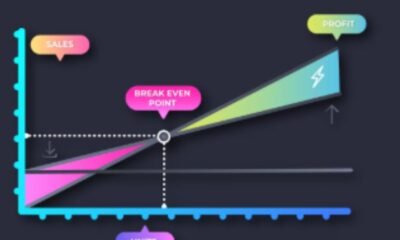BLOG
Nexus AlienSync: Bridging Worlds Beyond the Stars

Nexus AlienSync: Bridging Worlds Beyond the Stars
Nexus AlienSync In recent years, intriguing breakthroughs in quantum communication, astro-linguistics, and interstellar encryption have paved the way for Nexus AlienSync: Bridging Worlds Beyond the Stars, This article explores the ambitious technology, cultural implications, scientific collaborations, and ethical considerations that define this cosmic endeavor.
Unveiling the Core Technology
Quantum Entanglement Communication
At the heart of Nexus AlienSync lies quantum entanglement communication, which leverages pairs of particles whose states remain interlinked across vast distances. This near-instantaneous information transfer, combined with photon-based encryption, enables secure and reliable transmission of complex data pulses across galactic expanses.
Hyperspatial Relay Infrastructure
Nexus AlienSync’s relay network comprises strategically placed space stations at solar system Lagrange points. These waystations act as high-bandwidth nodes, dynamically routing packets of encrypted signals using AI-driven algorithms that adjust to fluctuating cosmic radiation and gravitational distortions. This dynamic routing ensures minimal latency and robust signal integrity, even under the harsh conditions of interstellar travel.
Astro-Linguistics and Semantic Translation
Decoding Alien Syntax
One of the most compelling aspects of Nexus AlienSync is its advanced interpreter system, built on astro-linguistics and deep neural translation models. Engineered to discern patterns in alien propulsion signals, tonal waveforms, and symbolic glyphs, these neural networks map unfamiliar constructs into Earth languages. Over time, the system learns to interpret alien metaphors—like “solar blossom” referring to a star’s lifecycle—by aligning them with human semantic frames such as “stellar evolution.”
Cultural Context and Diplomatic Syntax
Beyond mere translation, Nexus AlienSync is trained to recognize cultural emphasis, ritualistic signal patterns, and social formality. When an alien civilization transmits a “greeting glyph,” the system analyzes its structure, cadence, and graphic style to determine whether it signifies welcome, respect, or hierarchical deference.
Scientific Synergy Across Civilizations
Collaborative Astrophysics Projects
Nexus AlienSync enables joint research in gravitational wave mapping, dark matter detection, and exoplanet climatology. For instance, the Quantum Observatory Network merges Earth-based telescopes with alien hyperspectral sensors, facilitating real-time analysis of star formation patterns across galaxies.
Bioengineering and Genetic Safety
A cornerstone of this cosmic alliance is the BioSynth Initiative, where terrestrial geneticists collaborate with alien xenobiologists to explore bioluminescent organisms and extremophile traits. These hybrid experiments—conducted within sealed quantum biolabs—are protected by regulatory protocols to prevent unintended gene transfer or cross-species infection.
Security Measures and Ethical Safeguards
Cybersecurity in Space
Cosmic cyber threats are more divergent than any terrestrial malware. Nexus AlienSync employs layered encryption—from quantum-resistant ciphers to AI anomaly detectors—to safeguard against infiltration by unknown alien code. Continuous system audits and threat simulations benchmark resilience against exotic computational attacks, with safety overrides built into the architecture.
Governance by Interstellar Council
To prevent technological misuse, an Interstellar Council governs all communication protocols. This consortium includes human delegates, alien liaisons, and autonomous AI advisors, all vetted through secure consensus protocols. This governance framework enforces transparency in technology transfers, prohibits offensive weaponization, and maintains ethical standards in cross-species research.
Civilian Applications on Earth
Next‑Gen Quantum Internet
Leveraging technologies from Nexus AlienSync, Earth has seen the rollout of advanced quantum mesh networks. These quantum internet infrastructures deliver ultra‑secure messaging, instantaneous data synchronization, and resilience against classical hacking attempts. They also support decentralized applications in finance and healthcare, revolutionizing data integrity and privacy.
Environmental Monitoring
Satellite relays from the Nexus project now assist meteorologists and climate scientists. Hyperspectral imaging sensors, originally built for cosmic observations, are repurposed to track deforestation, ocean acidification, and urban heat islands. The spectral data, enhanced through quantum-enhanced resolution, enables faster and more accurate environmental assessments.
Overcoming Challenges and Constraints
Navigating Signal Degradation
Despite entanglement’s promise, photon transmission can falter due to cosmic dust interference and gravitational lensing. Addressing this requires redundant relay pathways and adaptive signal encoders that recalibrate based on real-time space weather data. Continuous maintenance missions are essential to ensure relay station functionality.
Resolving Translation Ambiguities
Even with astro-linguistic advances, metaphorical and cultural misalignments sometimes occur. For instance, an alien phrase likening their sun to a “celestial guardian” might trigger misinterpretations around aerospace defense. Human negotiators must work in tandem with translation AI to clarify contextual intent and avoid diplomatic friction.
Looking to the Future
Expansion Toward Neighboring Galaxies
The next phase involves scaling Nexus AlienSync beyond the Milky Way. Proposals include deploying tachyon-enhanced relay beacons toward Andromeda and satellite swarms designed for warp-slot data routing. Such expansion demands breakthroughs in faster-than-light transmission, cosmic navigation, and intergalactic treaties to unify disparate civilizations.
Emergent Cultural Renaissance
The Nexus impact isn’t only technological—it’s cultural. Exposure to alien philosophies, art forms, and worldviews fosters creative renaissances in music, architecture, and literature. Earth’s cultural fabric is enriched by new aesthetic paradigms inspired by cosmic diversity, sparking philosophical dialogues across universes.
Frequently Asked Questions (FAQs)
Q: What is Nexus AlienSync and what does it do?
Nexus AlienSync is an interstellar communication initiative using quantum entanglement and AI‑driven translation to connect Earth with extraterrestrial civilizations, enabling secure data exchange and collaborative research.
Q: How does astro-linguistics work in this project?
Astro‑linguistics integrates deep neural networks with symbolic pattern recognition to decode alien syntax, tone, and glyphs, mapping them into Earth languages by recognizing structural correspondences and cultural context.
Q: Are there security risks with cosmic communication?
Yes. Nexus AlienSync mitigates risks using quantum encryption, AI anomaly detection, and governance protocols to guard against infiltration, data corruption, or misuse of advanced alien knowledge.
Q: What practical benefits does humanity gain from the project?
Civilian spin-offs include a quantum‑secure internet, enhanced satellite environmental monitoring, and insights into exoplanet science, all derived from technologies initially developed for interstellar communication.
Q: Can Nexus AlienSync truly reach other galaxies?
Expansion plans exist, but overcoming cosmic distance requires new physics—like tachyonic messaging and warp‑slot relays. These may become feasible in future decades with intergalactic treaties and technological breakthroughs.
Conclusion
Nexus AlienSync represents a bold leap from science fiction to scientific reality, blending quantum communication, astro‑linguistics, and ethical governance to connect Earth with alien civilizations.
BLOG
Besos Meaning: A Journey into the Heart of Latin American Culture

Besos is derived from the Spanish language, where it translates to “kisses.” However, the meaning of besos goes beyond a simple translation. It’s a term that encompasses a range of emotions, from affection and love to passion and intimacy.
The Cultural Significance of Besos
In many Latin American cultures, besos are an integral part of daily life. They’re a way to show affection, greet one another, and express love. The cultural significance of besos is deeply rooted in the values of warmth, hospitality, and closeness.

The Different Types of Besos
While the term “besos” is often associated with romantic love, it’s not the only context in which it’s used. Besos can be exchanged between family members, friends, and even as a greeting or farewell.
- A beso on the cheek is a common greeting in many Latin American countries.
- A beso on the lips is often reserved for romantic partners or loved ones.
- A beso on the forehead or hand can be a sign of respect, affection, or blessing.
“I remember my abuela giving me besos on the forehead every night before bed. It was a special moment that made me feel loved and safe.”
The Emotional Significance of Besos
Besos are more than just a physical gesture; they’re a way to convey emotions and connect with others. The act of giving or receiving a beso can evoke feelings of comfort, security, and love.
FAQs
Q: What is the meaning of besos in Spanish?
A: Besos is the Spanish word for “kisses.” It’s a term used to describe a range of affectionate gestures, from romantic kisses to friendly pecks on the cheek.
Q: How do you use besos in a sentence?
A: You can use besos in a sentence to express affection or love, such as “Dale besos a tu familia de mi parte” (Give your family a kiss from me).
Q: What is the cultural significance of besos in Latin America?
A: Besos play a significant role in Latin American culture, where they’re used to show affection, greet one another, and express love.
Q: Can besos be used in non-romantic contexts?
A: Yes, besos can be used in non-romantic contexts, such as between family members or friends. It’s a way to show affection and closeness.
Conclusion
Besos, we discover that it’s more than just a word – it’s a way to connect with others and express our emotions. Whether you’re looking to deepen your understanding of Latin American culture or simply want to show affection to those around you, besos is a term that’s worth exploring further.
BLOG
Luxury Cruise Passengers: Staying Safe on the High Seas

Luxury cruises often traverse through exotic waters, some of which are notorious for piracy. The Gulf of Aden, the Indian Ocean, and parts of Southeast Asia are known hotspots where pirates have been active. These areas are often near popular cruise routes, putting luxury cruise passengers at risk.
Piracy Tactics: How Pirates Target Luxury Cruises
Pirates have become increasingly sophisticated, using tactics like GPS spoofing and fake ship identities to target unsuspecting vessels. They often look for easy prey, such as slow-moving ships or those with lax security. Luxury cruises, with their high-value passengers and cargo, can be attractive targets.
The Human Impact: Stories from Luxury Cruise Passengers
“I was on a luxury cruise in the Gulf of Aden when we received a piracy warning. The crew immediately took action, increasing security measures and altering our course. It was a harrowing experience, but thanks to their quick response, we were safe.” The fear and uncertainty that come with a piracy warning can be unsettling, but being prepared and knowing what to expect can make all the difference.
Staying Safe: Precautions and Measures for Luxury Cruise Passengers
To minimize the risk of piracy, luxury cruise lines have implemented various security measures. These include:
- Traveling in convoys or with naval escorts
- Implementing advanced security systems, such as radar and surveillance cameras
- Conducting regular security drills and training for crew members
- Increasing security personnel on board

What Luxury Cruise Passengers Can Do
While cruise lines take necessary precautions, passengers can also play a role in staying safe. Being aware of the risks and taking simple precautions, such as staying informed about piracy hotspots and following crew instructions, can help minimize the risk of piracy.
Piracy Warning Systems: How Luxury Cruises Stay Ahead
Luxury cruise lines use advanced piracy warning systems to stay informed about potential threats. These systems provide real-time updates on piracy hotspots and suspicious activity, enabling crews to take proactive measures to avoid danger.
The Role of Technology in Piracy Prevention
Technology plays a vital role in preventing piracy. Advanced systems, such as satellite tracking and AI-powered surveillance, help cruise lines stay one step ahead of pirates. These technologies enable crews to respond quickly and effectively in the event of a piracy warning.
FAQs
Q: What should I do if I receive a piracy warning on my luxury cruise?
A: If you receive a piracy warning, follow the instructions of your crew immediately. They are trained to handle such situations and will take necessary precautions to ensure your safety.
Q: Are luxury cruises more vulnerable to piracy than other types of cruises?
A: Luxury cruises can be attractive targets for pirates due to their high-value passengers and cargo. However, luxury cruise lines often have advanced security measures in place to minimize the risk.
Q: How can I stay informed about piracy hotspots and safety measures on my luxury cruise?
A: Your cruise line will provide you with information about piracy hotspots and safety measures in place. You can also stay informed through government travel advisories and industry reports.
Q: Can I travel safely on a luxury cruise despite the risk of piracy?
A: Yes, with the right precautions and awareness, you can travel safely on a luxury cruise. Cruise lines take piracy seriously and have measures in place to protect passengers.
Conclusion
Luxury cruise, staying informed about piracy risks and taking necessary precautions can help ensure a safe and enjoyable journey. By understanding the risks and being aware of the measures in place to prevent piracy, you can relax and enjoy your time on board.
BLOG
Mandarin for Mandarin: Tips and Tricks for Language Learners

Mandarin can be a rewarding and enriching experience, especially when you focus on learning Mandarin for Mandarin. By doing so, you can:
- Improve your pronunciation and intonation
- Develop a deeper understanding of Chinese culture and history
- Enhance your career opportunities in China or with Chinese companies
Immersing Yourself in the Language
One of the most effective ways to learn Mandarin for Mandarin is to immerse yourself in the language. This can be done by:
- Watching Chinese movies and TV shows
- Listening to Chinese music and podcasts
- Speaking with native Mandarin speakers
For example, “I started watching Chinese dramas with English subtitles and it really helped me improve my listening skills and get used to the natural flow of the language.”

Tips for Learning Mandarin for Mandarin
When it comes to learning Mandarin for Mandarin, there are several tips to keep in mind:
- Focus on tones and pronunciation
- Practice speaking and listening regularly
- Use language learning apps and resources
Using Language Learning Apps
There are many language learning apps available that can help you learn Mandarin for Mandarin. Some popular options include:
- Duolingo
- HelloTalk
- Pleco
FAQs
Q: What is the best way to learn Mandarin for Mandarin?
A: The best way to learn Mandarin for Mandarin is to immerse yourself in the language by watching Chinese media, speaking with native speakers, and practicing regularly.
Q: How can I improve my Mandarin pronunciation?
A: You can improve your Mandarin pronunciation by listening to native speakers, practicing speaking regularly, and using language learning apps that focus on pronunciation.
Q: What are some common challenges when learning Mandarin for Mandarin?
A: Some common challenges include mastering tones, understanding grammar and syntax, and finding opportunities to practice speaking and listening.
Q: Can I learn Mandarin for Mandarin on my own?
A: Yes, you can learn Mandarin for Mandarin on your own with the right resources and motivation. However, it’s also helpful to work with a language exchange partner or tutor to get feedback and support.
Conclusion
Mandarin for Mandarin requires dedication, persistence, and the right resources. By immersing yourself in the language, practicing regularly, and using the right language learning tools, you can achieve fluency and unlock new opportunities. Whether you’re a beginner or advanced learner, there’s always room to improve and refine your Mandarin skills.
-

 TECH6 months ago
TECH6 months agoApple iPhone 17: Official 2025 Release Date Revealed
-

 BLOG6 months ago
BLOG6 months agoUnderstanding the ∴ Symbol in Math
-

 EDUCATION6 months ago
EDUCATION6 months agoHorizontal Translation: How to Shift Graphs
-

 EDUCATION6 months ago
EDUCATION6 months agoUsing the Quadratic Formula
-

 EDUCATION6 months ago
EDUCATION6 months agoThe Meaning of an Open Circle in Math Explained
-

 HEALTH6 months ago
HEALTH6 months agoGoodNever: Wellness, Simplified
-

 EDUCATION6 months ago
EDUCATION6 months agoWhy Does m Represent Slope?
-

 EDUCATION6 months ago
EDUCATION6 months agoHow to Solve Quadratic Equations 2
